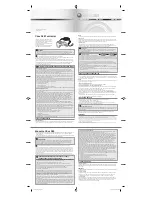
©
2019 WEINZIERL ENGINEERING GmbH
Page 4/16
Group object
Type KNX
Size
Direction
GO 16 Dimmer A: Dimming output -
State On/Off
1.001
1 Bit
To KNX
GO 17 Dimmer A: Dimming output -
State value
5.001
1 Byte
To KNX
Time for cyclic state
With this parameter, the cycle time can be set, when “Cyclic and
on change“ is selected for sending state.
Behavior on bus power failure
The behavior of the output in the event of bus power failure can
be configured here.
The following options are selectable:
No reaction
Dim to value
A parameter for adjusting the value appears.
Behavior after bus power return
Here the behavior of the output after bus power return can be
configured. This behavior will be set after every device restart
(e.g. also on restart after ETS download).
The following options are selectable:
No reaction
Dim to value
A parameter for adjusting the value appears.
State like before bus power failure
Scene function
The scene function can be activated or deactivated here; it is
only available in the "Dimmer" operating mode. If this function is
activated, the parameter page "Dimmer A: Scene function"
appears for further configuration of scenes 1-16. The further
functionality is explained in section G.
Automatic mode
Automatic mode is only available in the "Dimmer" function. If this
mode is selected, the following objects become visible:
Group object
Type KNX
Size
Direction
GO 19 Dimmer A: Automatic Mode -
Activate
1.001
1 Bit
From/To
KNX
GO 20 Dimmer A: Autom. dimming abs. -
Set value
5.001
1 Byte
From KNX
When using automatic mode, the dimmer can be controlled via
object 20, e.g. for light control or daylight-dependent basic light-
ing.
In automatic mode, the dimmer can be manually overridden by
dimming on/off, dimming rel., dimming value, scene, slumber
function or sequencer. During manual override, values of object
20 are ignored, each manual override restarts the fallback time.
After the fallback time set in the parameter has elapsed, the
values received on object 20 are processed again.
Via object 19, the automatic can be switched on or off at any
time, it also serves as a state object for automatic mode.
Slumber function
The slumber function is only available in the "Dimmer" operating
mode. The slumber function offers 2 different fade times each for
switching on and off via object. If this function is activated, a new
parameter page appears, which is explained in section H.
Lock function
The lock function can be activated or deactivated here.
This function is available in both "Dimmer" and "Staircase func-
tion" operating modes. If this function is activated, a new param-
eter page appears for further configuration, which is explained in
Section I in more detail.
D.
Dimmer A: Dimmer
Object Dimming on/off
For switching the dimmers, the following object is available, if it
has been activated via parameters:
Group object
Type KNX
Size
Direction
GO 11 Dimmer A: Dimming on/off -
Switch
1.001
1 Bit
From KNX
Behavior on ON telegram (when dimmer is off)
If the dimmer is switched off, this parameter can be used to
configure the behavior when switching on via object 11.
It is available:
No reaction
Dim to fix value
Dim to last value before switching off
Behavior on ON telegram (when dimmer is on)
If the dimmer is already switched on, this parameter can be used
to configure the behavior for a new ON telegram via object 11.
It is available:
No reaction
Dim to fix value
Dim to fix value if higher than actual
Dimming value on ON telegram
This value is activated by ON telegram via object 11 with suitable
parameterization.
Fade time on ON telegram
This fade time is active when an ON telegram is received. The
period refers to a complete dimming process of 0-100%.


































